|
We are turning this week's blog over to one of our authors, Robin Saint, posting on the subject of Robin Hood. Disclaimer: The views expressed in this blog are not necessarily those of Selfishgenie Publishing. 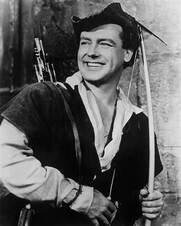 Actor Richard Greene as Robin Hood. Actor Richard Greene as Robin Hood. As a youngster I was brought up on stories of Robin Hood. There were the movies of course, with Douglas Fairbanks and Errol Flynn, that used to pop up on Sunday afternoon TV. Even Disney gave us a cartoon version. But the big influence was the ITV series starring Richard Greene that ran between 1955 and 1959 (though it seemed to run for much longer). There were other series that came later, some better, some worse, but the 1950s version was the one that shaped my memories. Once I started to read for entertainment, rather than just to learn to read, Robin Hood books were high on my reading list. There were many written for children, and I probably read them all. As a naïve child I loved the idea that someone would exercise justice on behalf of the “little people” and right the wrongs that the rich and powerful perpetrated. How the persecuted sub-postmasters of the UK could have done with a Robin Hood to fight their corner for the last 20 odd years. But then I grew up and realised that while we would love people like Robin Hood to have existed, they probably didn’t. At least not in the form the stories say they did. 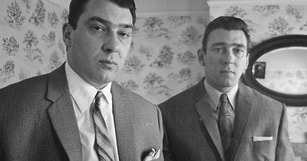 The Kray Twins, scourge of London's East End The Kray Twins, scourge of London's East End Many criminals have been compared to Robin Hood in their actions. I can remember the notorious London gangsters the Kray Twins* being given a favourable comparison in some quarters because they “loved their mum” and also because no crime was allowed to be committed in their “manor” without their permission, which made it a “safe place to live”. There are two things wrong with that comparison. Firstly, just because someone loves their mother it doesn’t make them a good person. All criminals have mothers and on the basis of statistical probability alone, some of them will love their mothers. The second thing is that if the Krays stopped other criminals from operating in their neighbourhood, it was only so that they could keep it all to themselves. They operated protection rackets and other criminal enterprises that preyed on their neighbours and if anyone crossed them, they would soon find out how unsafe the East End of London could become. It was, perhaps, the arrest and prosecution of the Kray Twins in the late 1960s that made me start to re-think the story of Robin Hood. 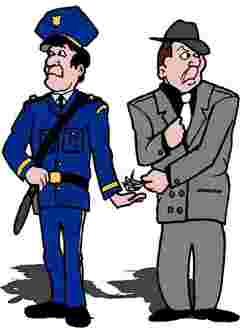 By now I knew that there had probably never been a real Robin Hood. There may have been a few real people (petty criminals in the main) who provided the basis for the stories, but the man himself never existed. One such story originated in Barnsdale Forest in Yorkshire, where a Robin Hood type figure used to stop travellers on the road and demand they pay a “tax” to continue their travels unmolested. Another way of describing that is as a protection racket, aka extortion. But what changed for me was the idea that just because a person loves their mum or looks after their neighbours, it doesn’t mean they can’t be a violent criminal as well. For example, if you need an alibi, then it helps to have a friendly neighbour who can provide it. If someone has knowledge of your actions or whereabouts, then it is probably a good idea to make sure that they are looked after. A small favour here, a bribe there and they’ll keep your secrets. And if they don’t, an underlying threat of violence will keep flapping lips closed. 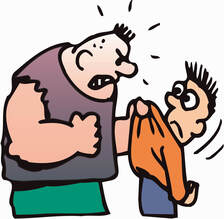 Robin Hood (if he existed) robbed from the rich, because that’s what criminals do, but he didn’t give to the poor – he bribed them. The poor peasants of Sherwood Forest would keep his whereabouts a secret so long as he was paying them more than the measly reward being offered by the Sheriff of Nottingham. And if the Sheriff of Nottingham increased the reward money, there was always the threat of violence to ensure the peasants’ continued silence. At the time these thoughts started to form I didn’t have much time to do anything with them. I had a full and busy life (I still have) and the idea of writing a book just didn’t seem feasible at the time. It was many years later when I started to write the odd paragraph that laid out my thoughts on the subject. The thoughts turned into characters and once I had those I could create the conflicts that would turn into a plot. So, what of the other characters? I won’t bother with the other outlaws. Criminals often work in gangs so we can assume that if Robin Hood is a bad guy, then his pals will be bad guys too. I gave some of them back stories, but ones that would lead them into a life of crime. 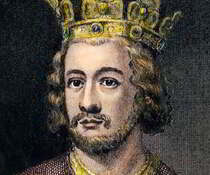 King John King John We have Prince John (as he was at that time). Well, he was the fourth son of a King and in those days the sons of kings pretty much took what they wanted. Historically, John didn’t have any land to draw an income from. His father had granted him rule over Ireland, but first he had to conquer it and that didn’t work out too well. When his big brother Richard became King he gave John the rights to the taxes from Leicestershire, Derbyshire and Nottinghamshire so that he would have some form of income. John gave orders to squeeze aa much in taxes from those counties as was possible, but that was the Sheriff’s job regardless of whether the taxes went to Richard or to John. John wasn’t a great Prince or King, but history tends to paint him as being worse than he really was for the period. Trust me when I say we have had worse kings (and queens) than John. The Sheriff of Nottingham was just doing his job, really. His job was to keep the peace and to collect the taxes on behalf of the King (or in this case, Prince John). Nobody likes tax collectors and if you were a criminal in Nottinghamshire you had other reasons not to like the Sheriff very much. In modern terms many people don’t like or trust the police, but they are the first ones to call 999 when their houses are burgled. So, I decided that the Sheriff of Nottingham was probably nothing out of the ordinary for the period, but he did have a boss that wanted more money, so he was probably a bit zealous when it came to collecting the taxes. 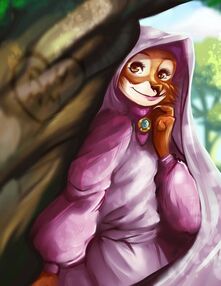 Maid Marion, a really foxy lady. Maid Marion, a really foxy lady. Maid Marion was probably the hardest character for me to create. At first I made her a “bad girl” who was attracted to Robin because of his nasty character (according to my version of him). It is a familiar trope and one that exists in real life (Bonnie and Clyde, Rose and Fred West, Myra Hindley and Liam Brady et al). But I realised I needed a nice character to contrast all the bad ones, so that became part of her role in the story. She’s a bit of a “goody two shoes” but that just helps to contrast with Robin’s darkness. Robin himself was easy to create. 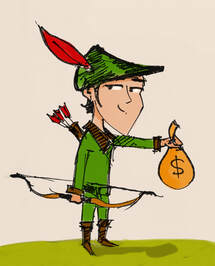 I followed some of the mythology and had him serving with King Richard’s crusaders, but rather than being a heroic figure coming home to reclaim his land and titles, I decided that he had used his time the Middle East to line his own pockets (the real purpose of the crusades was to grab land and wealth anyway. The re-conquering of Jerusalem for Christianity just provided an excuse.) and that had led to him crossing the wrong person. He fled King Richard’s army and returned to England. As he had been declared an outlaw for what he had done he had to live by his wits which, in those days, meant robbing and stealing. But even if Robin hadn’t been declared an outlaw, he would probably have followed a criminal path, because he wasn’t the type to earn an honest living. At least, my version of him wasn’t. That left me needing a hero, so I used a popular trope, which is the wrongly accused man. My hero, Erlich, is falsely accused of killing his own father and has to go on the run or face a noose. He finds a relatively safe haven with Robin Hood and his gang but hates the life they lead. All he really wants to do is clear his name and go back to his old life.. 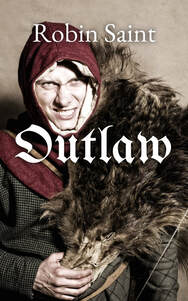 So, with a cast of characters all I needed was a plot to carry them and there were plenty of tropes to call on for that. Readers may recognise some of them. That is how I created Robin Hood the bad guy and turned him into my novel “Outlaw”. If you have any questions, feel free to post them in the comments section below and I’ll be happy to answer them. To find out more about “Outlaw” by Robin Saint, click this link. * Editor's note: Little known fact: The Kray Twins were the last prisoners to be held in the Tower of London. Ask in the comments section if you want to know why. If you have enjoyed this blog, or found it informative, then make sure you don’t miss future editions. Just click on the button below to sign up for our newsletter. We’ll even send you a free ebook for doing so.
0 Comments
Leave a Reply. |
AuthorThis blog is compiled and curated by the Selfishgenie publishing team. Archives
June 2025
|
 RSS Feed
RSS Feed